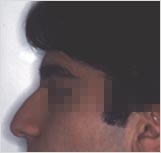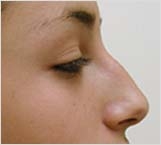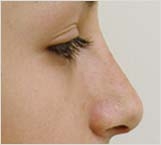Guide to Rhinoplasty (Nose Job)
Reviewed by the physicians of Columbia’s Plastic Surgery Team, May 2025
A nose job (rhinoplasty) is a surgical procedure to change the shape and size of the nose to improve appearance and breathing.
Key Facts
- Rhinoplasty is one of the most common cosmetic procedures in the US.
- Adjusting the shape and size of the nose can have a significant impact on facial balance and symmetry.
- The procedure can also help improve breathing.
What is Rhinoplasty?
Rhinoplasty is a surgery that changes the shape or size of the nose. The procedure is also known as a “nose job.”
Why Would Someone Want Rhinoplasty Surgery?
The procedure may be done to improve facial symmetry and overall aesthetics. Rhinoplasty can also help improve breathing and correct structural issues like a deviated septum.
Who Is a Good Candidate for Rhinoplasty?
This procedure is best for adults who would like to improve their appearance or correct a breathing issue. Because best results for rhinoplasty typically require facial development and growth to be complete, rhinoplasty isn’t recommended before the mid to late teens.
How Is Rhinoplasty Performed?
- The surgeon will make a small incision either on the inside of the nose (closed rhinoplasty) or a small external cut at the base between the nostrils (open rhinoplasty).
- The bone and cartilage is then adjusted underneath the skin by removing or moving cartilage from the nose.
- Depending on the patient's specific needs, the surgeon may add an implant or cartilage from the ear or other area.
- The septum (the inner wall that divides the nasal cavity) may be straightened as part of the procedure.
- Once the corrections are in place, the incision is then closed.
How Long Does Rhinoplasty Take?
The surgery generally takes 1 ½ to 3 hours.
Does Rhinoplasty Require an Overnight Stay at the Hospital?
Rhinoplasty is typically performed as an outpatient surgery, meaning patients can go home the same day as their procedure.
What Are the Benefits of Rhinoplasty?
Even a small change to the size and shape of the nose can have a significant impact on someone’s overall appearance. And the procedure may offer relief for people who have suffered from chronic breathing issues.
What Are the Risks?
As with all surgeries, rhinoplasty carries some risk of complications, including:
- Infection
- Bleeding
- Blood clots
- Pain
- Swelling
- Delayed healing
- Nerve damage/numbness
How Does Someone Prepare for the Procedure?
- Avoid taking aspirin, Advil, Motrin, or other aspirin-containing products for two weeks prior to surgery.
- Stop smoking to aid in healing.
- Someone must accompany the patient to take them home after surgery.
What Type of Anesthesia is Used?
Rhinoplasty is typically performed under general anesthesia, meaning the patient is asleep for the surgery.
What Is Recovery Like?
- After the procedure, a splint may be used to support and maintain the new nose shape during recovery.
- There may be some swelling and bruising after surgery.
Will People Be Able to See Incision Scars?
For open rhinoplasty, there may be some visible scarring, but it should become less noticeable over time, especially if post-operative care instructions are followed.
How Long Until Results Are Visible?
It will take four to six weeks for any swelling and bruising to subside, after which changes will be visible. It will take up to a year to fully heal and reach final results.




How Long Will Results Last?
Results from a nose job are permanent because the procedure changes the structure of the nose. Aging or trauma to the face can affect the nose shape, and some people may occasionally need revision surgery to achieve their desired results.
Will Insurance Cover the Procedure?
Typically, health insurance doesn’t cover rhinoplasty for cosmetic purposes, but may cover the surgery for medical reasons such as a congenital defect or trauma.
Next Steps
If you’d like to learn more about a nose job or other cosmetic procedures, our team at Columbia is here to help. Call us at (212) 305-3103 or request an appointment online. We accept a number of insurance plans, and our team can help confirm your coverage.
Related
Related Treatments
- Brow lift
- Chin Surgery
- Face Lift (Rhytidectomy)
- Botox Injection
- Injectable Fillers
- Cosmetic Ear Surgery (Otoplasty)
- Cosmetic Eyelid Surgery (Blepharoplasty)
- Neck Lift
- Breast Augmentation
- Breast Reduction (Mammoplasty) & Gynecomastia (for men)
- Breast Lift (Mastopexy)
- Liposuction
- Arm Lift Surgery (Brachioplasty)
- Body Contouring After Weight Loss (Body Lift & Thigh Lift)
- Tummy Tuck (Abdominoplasty)
- Scar Revision Surgery
This content has been created by Columbia’s Health Guide Team. Learn more about our efforts to bring you the clearest, most accurate, and most human health resources available.
